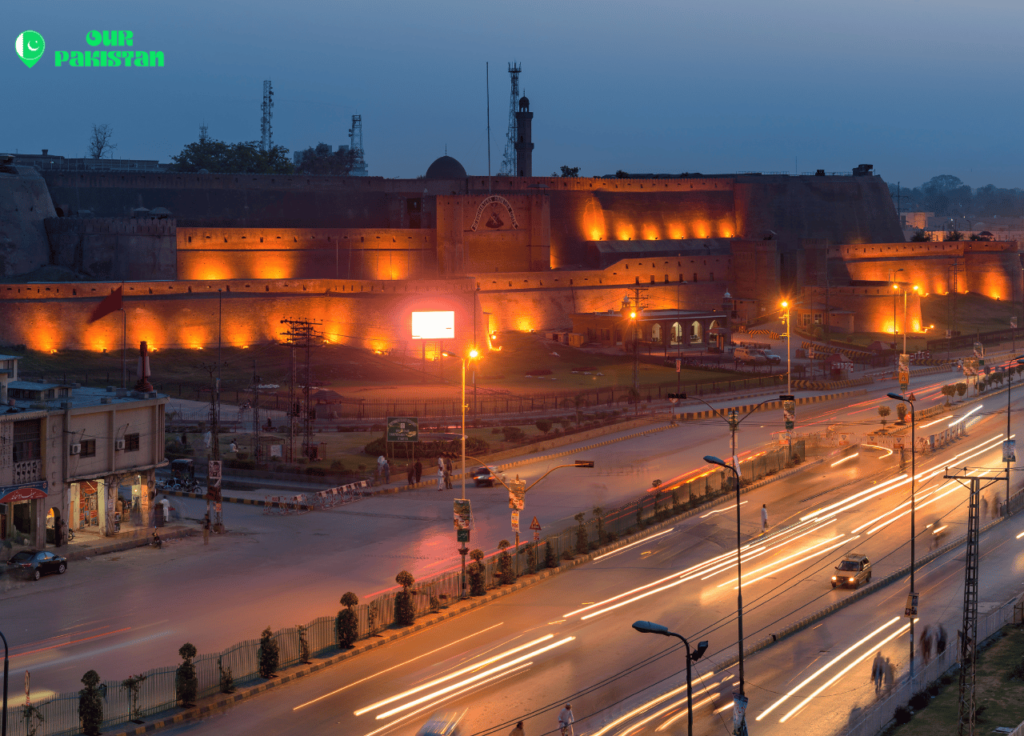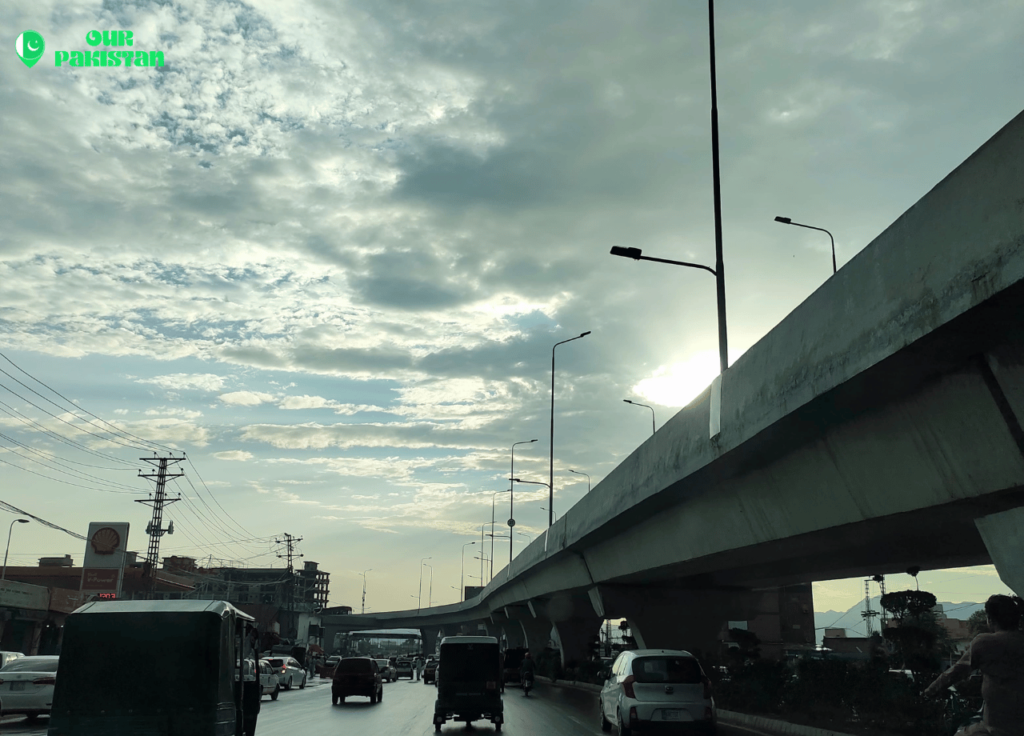Nestled at the gateway to the historic Khyber Pass, Peshawar stands as a testament to the passage of countless civilizations, cultures, and empires, from the ancient Greeks to the Mughal era. As the capital city of Khyber Pakhtunkhwa, Peshawar Pakistan is not only the political and economic hub of the region but also a vibrant repository of rich cultural heritage and ancient traditions. Its strategic location has historically made it a pivotal point of trade and cultural exchange between the Indian subcontinent and Central Asia, thereby weaving a tapestry of diverse influences into the city’s fabric. Today, Peshawar seamlessly blends its storied past with the vibrancy of modern life, making it a fascinating subject of study and exploration.
The article proceeds to delve into the historical evolution of Peshawar through the ages—highlighting its significance during the Mughal era, its role as a crucial connector between regions via the Khyber Pass, and its status as an ancient city that has seen countless rulers. It also explores key landmarks and attractions that offer insights into its rich past and cultural depth, such as the iconic Peshawari chappal and renowned Peshawar restaurants that serve traditional fare. Furthermore, a look into the modern developments within the city showcases how it has adapted and grown, maintaining its relevance as not just a historical, but also a contemporary capital city within Pakistan. Through these lenses, the article aims to provide a comprehensive understanding of Peshawar’s unique position in both the historical and modern landscapes of Pakistan.

Peshawar through the Ages
Early Settlements
Peshawar’s history as a major city dates back to its establishment as Puruṣapura, the western capital of Gandhara, which was later known as Peshawar. The region saw significant influence from various empires, including the Persian Achaemenid Empire and later Alexander the Great’s army before transitioning to the control of the Maurya Empire. This period marked the beginning of a cultural fusion, with the Indo-Greeks blending Greek and Indian languages, symbols, and religious practices.
Medieval Period
The city thrived under the Kushan Empire, becoming a center of Buddhist learning and culture. The construction of the Kanishka stupa, potentially the tallest building of its time, symbolized the city’s importance. Peshawar’s strategic location continued to attract diverse rulers, including the Hindu Shahis, before falling under Muslim dominion, which introduced Islam to its populace. The city served as a vital trading and cultural hub during the Mughal era, reflecting its enduring significance in the region.
British Rule
Post the Sikh conquest, Peshawar came under British control in 1849. During this period, the British established extensive military and administrative infrastructure, significantly impacting the city’s development. The non-violent resistance movement against British policies, led by Ghaffar Khan in 1930, highlighted the local opposition to colonial rule.
Post-Independence
Following the partition in 1947, Peshawar became an integral part of Pakistan, continuing its legacy as a key regional city. The Soviet-Afghan War saw Peshawar becoming a strategic political center and a refuge for Afghan mujahideen and refugees, further emphasizing its geopolitical significance.
Peshawar’s journey through the ages showcases its resilience and adaptability, maintaining its cultural and economic vitality amidst changing rulers and empires. Its historical narrative provides a deep insight into the broader regional dynamics of South Asia.
Connecting the Regions
Transport and Accessibility
Peshawar’s strategic location has made it a pivotal center for regional connectivity. The Great Trunk Road, an ancient route, has connected Calcutta in India with Peshawar in Pakistan for over 2,500 years, serving as a vital link for trade routes across Central Asia. This road supported essential infrastructure like forts, towns, and caravanserais, which were crucial for merchants transporting goods across this region. Furthermore, the introduction of the Zu Peshawar system has significantly enhanced local transport, making it a vital component in improving accessibility and economic opportunities for the city’s residents. This system is especially transformative for marginalized groups, including women and people with disabilities, by providing safer, more affordable, and accessible transport options.
Trade Routes
Historically, Peshawar has been an important trading center on the Grand Trunk Road. During the reign of Shah Jahan, Peshawar was bestowed with its own set of Shalimar Gardens, enhancing its cultural landscape. The city’s trade significance is further highlighted by its role as a cosmopolitan hub where goods, peoples, and ideas passed along trade routes, contributing to its diverse cultural fabric. In the late 1700s, Peshawar’s Bala Hissar Fort was noted by British explorer William Moorcroft as a main center of trade between Bukhara and India. Additionally, trade in Chinese and Indian tea with Central Asia was crucial, involving complex transnational capital flows that bypassed heavy taxation, illustrating Peshawar’s role in regional trade dynamics.
Key Landmarks and Attractions
Mahabat Khan Mosque
The Mahabat Khan Mosque, constructed between 1660 and 1670, is a significant architectural site in Peshawar. Named after the Mughal governor, Nawab Mohabat Khan Kamboh, the mosque showcases exquisite Mughal frescoes and a striking white marble facade. Its prayer hall is adorned with floral and geometric motifs, surrounded by tall minarets and embellished with intricate carvings and Quranic calligraphy.
Bala Hissar Fort
Bala Hissar Fort, with origins dating back to the 6th century, stands as a historic fortress in Peshawar. It served as a royal residence for the Durrani Empire from 1747 and now functions as the headquarters for Pakistan’s Frontier Corps. The fort, which has been opened to tourists, also houses a museum displaying various uniforms and weaponry used by the Frontier Corps through different periods.
Gor Khatri
Gor Khatri, originally a Buddhist monastery and later a Hindu temple, is an archaeological site rich in history. Built by Jehan Ara Begum in the 17th century, the site includes a caravanserai and a Jama Masjid. It has undergone various transformations over the centuries, including its use as a residence by Sikh general Paolo Avitabile and later as a police headquarters and fire brigade station. The site’s historical significance is further highlighted by its identification with the ancient Kanishka stupa.
Qissah Khwani Bazaar
Qissah Khwani Bazaar, known as the “Market of Storytellers,” is a vibrant marketplace in Peshawar. Established during the Mughal era, the bazaar is a cultural hub where traditional Pashtun cuisine and handicrafts are available. It has been the site of significant historical events, including the Peshawar massacre in 1930. The architecture of the bazaar, with its intricate wooden facades and arched gateways, reflects Mughal and Afghan influences.

Modern Developments
Urbanization and Infrastructure
Peshawar has experienced significant urban growth, catalyzed by the development of the Zu Peshawar BRT system. This initiative, launched in 2020, represents the region’s first gold-standard BRT, integrating a bicycle-sharing system and dedicated bicycle lanes, the first of their kind in the country. The system has been designed with a focus on inclusivity, addressing the needs of women, children, transgender people, and persons with disabilities through various stages of planning and implementation. Additionally, the project has enhanced the city’s resilience to extreme weather conditions by developing infrastructure to cope with heat and rain.
Further urban development has been supported by government-led projects aimed at improving essential urban services in Peshawar. These include augmenting water supply, upgrading sewerage networks, and enhancing solid waste management. The initiatives also extend to the development of green urban spaces, promoting sustainable and healthy living environments.
Investment Opportunities
The real estate sector in Peshawar is thriving, presenting numerous investment opportunities. The city’s expanding infrastructure, including new highways and commercial centers, has boosted its attractiveness to property investors. The government’s promotion of regional investment through incentives and tax benefits has further stimulated economic growth and enhanced the city’s appeal as a commercial hub.
Significant areas such as Hayatabad and Regi Model Town are emerging as prime locations for real estate investments due to their well-planned infrastructure and potential for growth. Additionally, the establishment of mixed-use developments that combine residential, commercial, and recreational facilities offers diversified income streams and meets the comprehensive needs of modern urban dwellers.
Peshawar’s strategic position as a gateway to Afghanistan and Central Asia enhances its role in regional trade, thereby increasing the value of commercial properties and offering lucrative returns on investment in the commercial real estate sector.
Conclusion
Throughout this discussion, we have traced the footsteps of Peshawar from its ancient origins as a crossroads of empires to its current status as a vibrant, modern city. By exploring its rich tapestry of historical landmarks, cultural evolution, and the adaptation to contemporary urban demands, we’ve uncovered the resilient spirit and enduring relevance of Peshawar. Its journey through time showcases not just the city’s ability to preserve its heritage but also its dynamism in embracing modern developments, making it a unique blend of the old and the new.
As we reflect on Peshawar’s significance, both as a historical entity and a flourishing contemporary urban center, it’s clear that its legacy is far from static. The city continues to be a testament to the continuous flow of human civilization, acting as a bridge between the past and the present. This duality not only enriches our understanding of Peshawar’s place in the world but also highlights its potential role in shaping the future. The ongoing interplay of tradition and modernity in Peshawar presents a compelling narrative of resilience, growth, and the enduring power of cultural exchange.